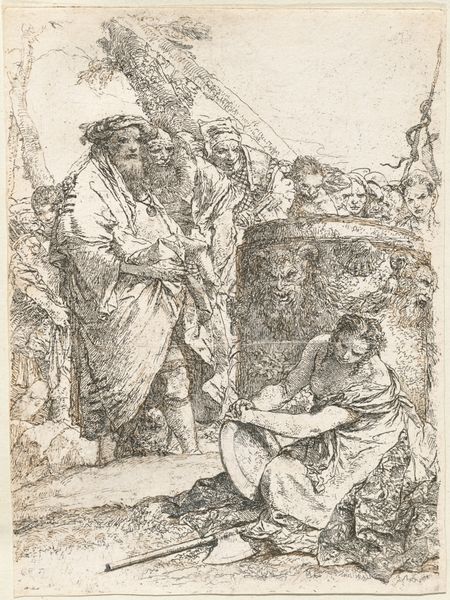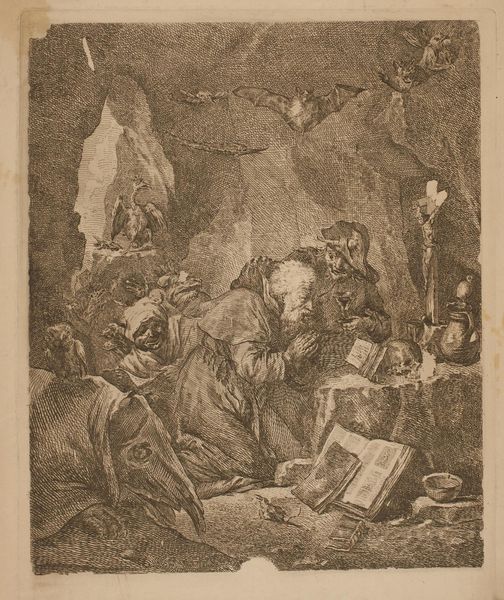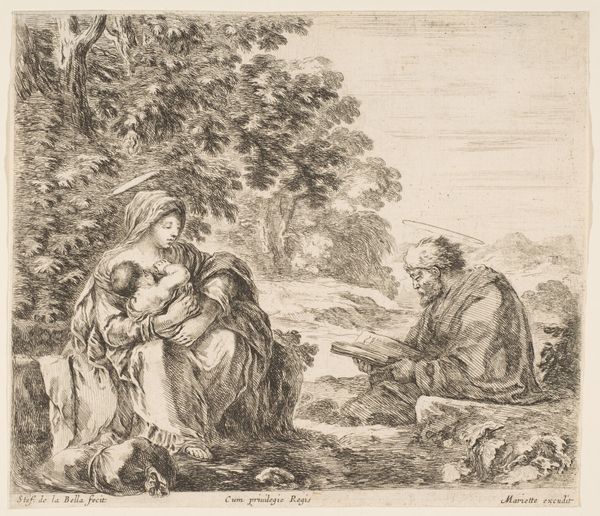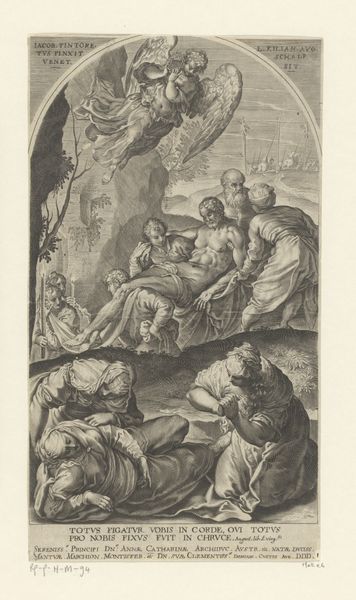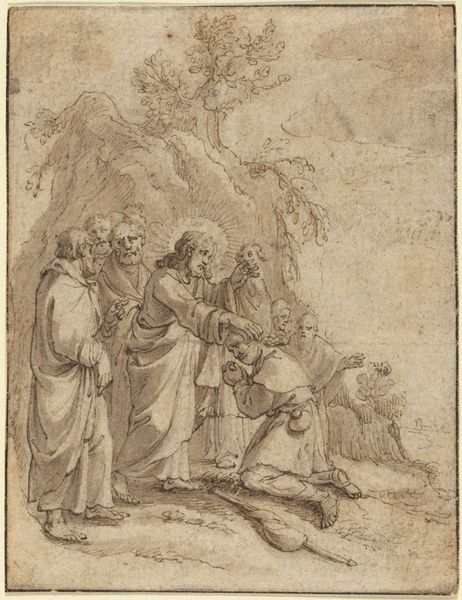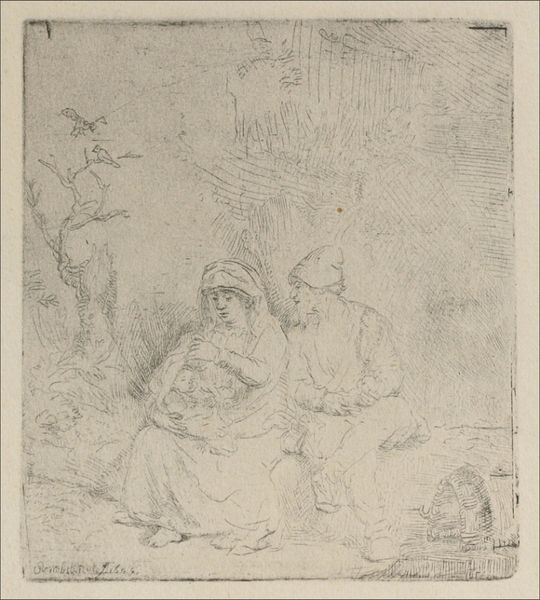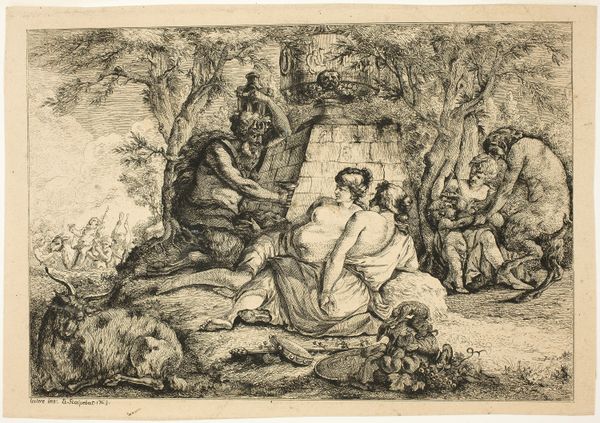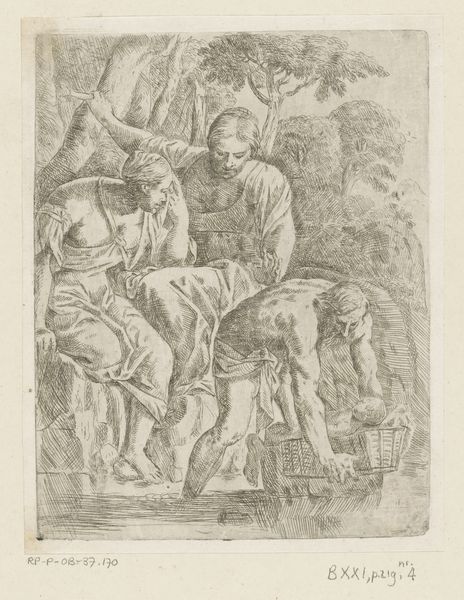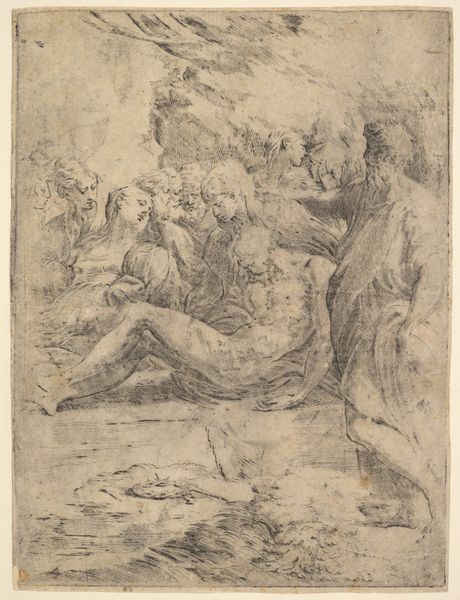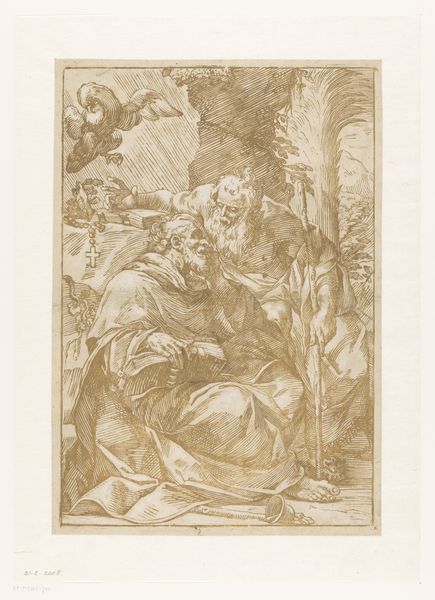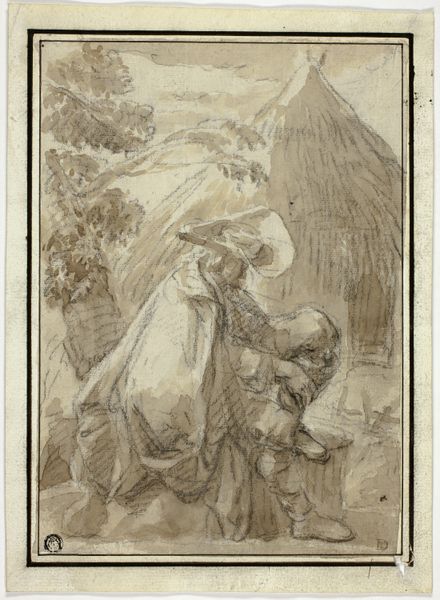
Woman kneeling in front of Magicians and other Figures, from the Scherzi 1725 - 1780
0:00
0:00
drawing, print, etching
#
drawing
#
narrative-art
#
baroque
# print
#
etching
#
etching
#
figuration
Dimensions: Plate: 9 x 6 11/16 in. (22.9 x 17 cm) Sheet: 9 3/8 x 7 in. (23.8 x 17.8 cm)
Copyright: Public Domain
Editor: So, this is Giovanni Battista Tiepolo's "Woman kneeling in front of Magicians and other Figures, from the Scherzi", created sometime between 1725 and 1780. It's an etching, currently housed at the Met. There's a definite somber, almost apprehensive mood. What strikes you most about this scene? Curator: What stands out is the positioning of the kneeling woman in relation to the magicians and other figures. Who holds power here, and why? Tiepolo lived in a society defined by rigid social hierarchies, but through his Scherzi etchings, he explores ambiguous and often subversive narratives. Is the woman seeking help, or is she a victim of their sorcery? Editor: It's hard to say, really. The line work seems to obscure any clear intent. Curator: Exactly! This ambiguity is key. Think about the historical context. The 18th century was a time of great intellectual ferment, but also superstition and patriarchal structures. These magicians could represent either enlightenment or manipulation. Where does the real power lie? Does the male gaze of the magicians subjugate the female subject? Editor: So you see the artwork as a commentary on power dynamics within 18th century society, especially concerning gender? Curator: Precisely. And perhaps even a questioning of the Church's authority or other figures who profited off deception, using what they deem is 'holy' to inflict hurt upon people, particularly women and those who were vulnerable during this period.. The print invites us to question these very structures of power and how they shape individual lives. Editor: I didn't consider it in that light initially. Seeing the woman as a symbol within this larger, critical context adds a new dimension. Curator: And that’s the beauty of art, isn’t it? It provokes dialogue and invites us to constantly re-evaluate our perspectives.
Comments
No comments
Be the first to comment and join the conversation on the ultimate creative platform.

